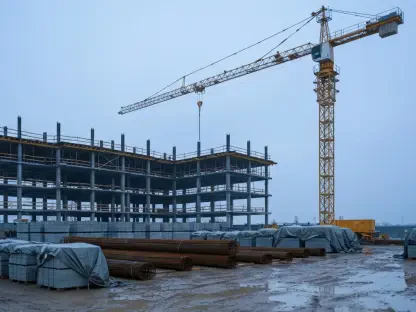The UK’s build-to-rent sector, often viewed as a cornerstone for modern urban housing, has recently exhibited a paradox of growth and contraction. While the sector celebrated a notable rise of nearly 16% in completed units from the first quarter of the previous year, reaching a total of 127,156 homes, there seems to be a brewing storm underneath these statistics. A 14% decrease in units currently under construction, with just 49,853 projects underway, symbolizes a potential slowdown in the number of new ventures being initiated. This unexpected pattern is further corroborated by planning data that reveals an 11.8% decline in homes at the Detailed Application stage. Despite these figures, there is a visible uptick in Detailed Permissions and Long-Term Planning, hinting at a potential recovery in the future. While such trends paint a complex picture, they emphasize the sector’s significance, particularly in improving tenant quality of life and offering extended tenancy agreements compared to traditional rental arrangements.
Emerging Planning Trends and Challenges
The ebb and flow of the build-to-rent market are heavily influenced by planning trends, which have recently shown a mixed bag of outcomes. On one hand, the detailed application stage is experiencing noticeable setbacks, with an 11.8% decrease, which could signify a bottleneck for new builds in the near term. Yet, on the other hand, increases have been witnessed in the Detailed Permissions and Long-Term Planning phases, suggesting that there might be a longer-term trajectory for recovery and growth. This developmental pause requires stakeholders to pay keen attention to planning nuances, an essential step for investors and developers. The planning stages act as critical indicators of where the sector might be heading, offering foresight into anticipated market performance. Overcoming these challenges involves staying vigilant towards changing regulations, adapting to evolving tenant needs, and strategically capitalizing on properties that might not immediately offer returns but hold promise in the future.
Despite the challenges manifesting in the immediate planning landscape, this sector remains deeply connected to the broader goals of government housing policies. With continued emphasis on revitalizing urban living environments, the build-to-rent sector still holds the promise of substantial future growth. The government’s housing objectives act as both a guiding force and reassurance for developers to sustain interest in the sector. Urban areas, in particular, are expected to benefit due to tenant demand, although property managers now face the added challenge of meeting heightened tenant expectations, whether it be through enhanced amenities or streamlined service offerings. Property management efficiency becomes a key differentiator, demanding the employment of efficient operational tools and services throughout various tenancy stages. This balanced approach is instrumental for sustaining the sector’s momentum, further highlighting the need for innovation and superior service.
Investor Interest and the Sector’s Future Resilience
The UK’s build-to-rent sector, widely regarded as a vital element for contemporary urban living, is experiencing a perplexing trend of growth contrasted by potential challenges. Despite a commendable increase of nearly 16% in completed units since the first quarter of last year, culminating in 127,156 homes, underlying issues suggest turbulent times ahead. A concerning 14% drop in units currently under construction, translating to merely 49,853 projects in progress, indicates a slowdown in new initiatives. This disconcerting trend is further supported by planning data showing an 11.8% decrease in homes at the Detailed Application stage, suggesting fewer new projects anticipated in the short term. However, an upswing in Detailed Permissions and Long-Term Planning stages points toward a hopeful resurgence in the future. These shifts underscore the sector’s crucial role, particularly in enhancing tenant living conditions and providing extended tenancy agreements that are often more appealing than traditional rentals.









